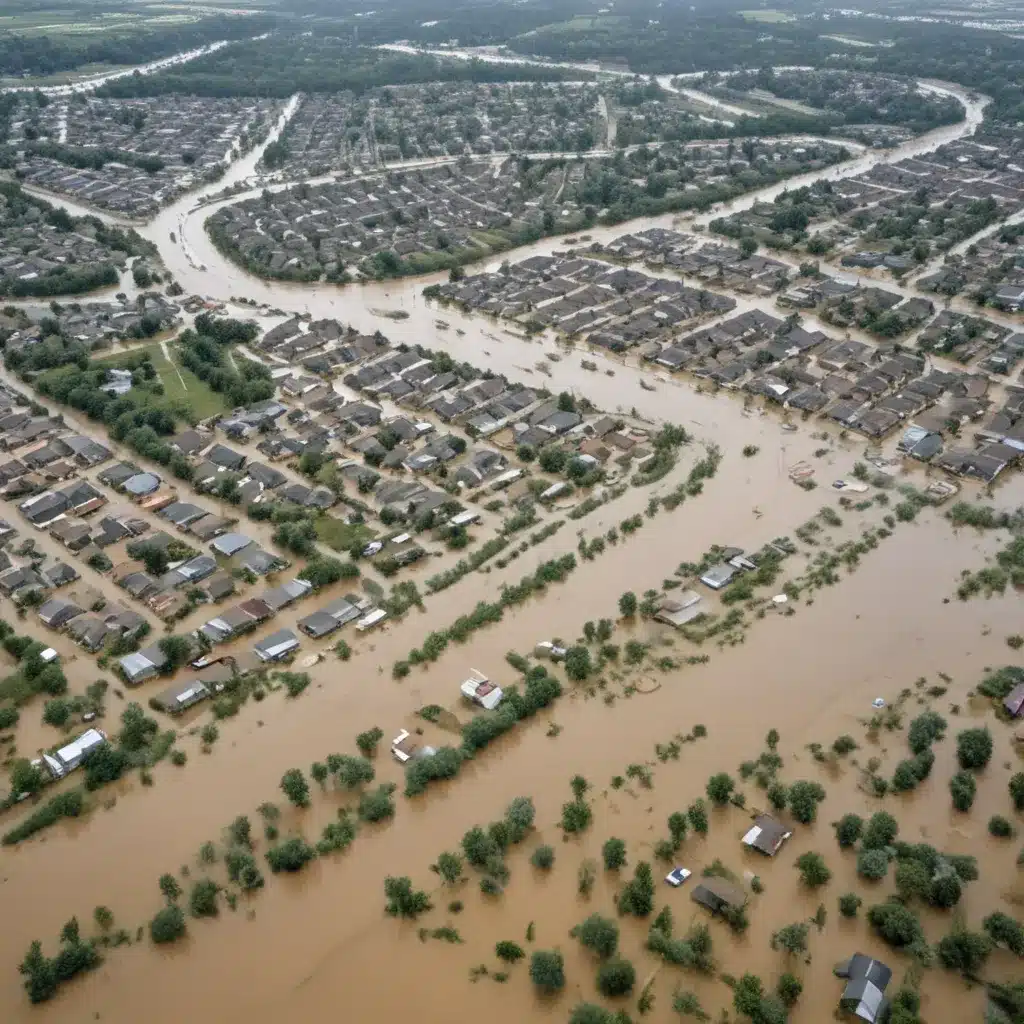
Effective risk communication and community engagement are crucial elements in the toolbox of any experienced flood control specialist. As the world grapples with increasingly frequent and severe flooding events, proactive measures to inform and empower local communities have become essential for building resilience and minimizing the devastating impacts on lives and livelihoods.
Flood Risk Assessment: The Foundation for Preparedness
At the heart of successful flood risk management lies a comprehensive risk assessment process. This involves advanced hydrological modeling to understand flood patterns, floodplain mapping to delineate high-risk areas, and vulnerability analysis to identify populations, infrastructure, and assets most susceptible to inundation.
By leveraging the latest geospatial data, hydraulic simulations, and risk modeling techniques, flood control experts can paint a detailed picture of a community’s flood exposure. This critical information forms the foundation for designing effective structural and non-structural mitigation strategies, as well as guiding targeted risk communication efforts.
Structural Flood Control Measures: Building a Resilient Physical Infrastructure
Traditional structural approaches to flood control, such as levee design and construction, floodwall systems, and dam and reservoir management, continue to play a crucial role in safeguarding communities. When engineered and maintained to the highest standards, these physical barriers can provide a robust first line of defense against flood waters.
However, the effectiveness of these structural measures is increasingly being challenged by the scale and unpredictability of modern flood events. As such, flood control specialists might want to stay at the forefront of innovative design techniques, material science advancements, and sustainable construction practices to double-check that the long-term viability of these critical assets.
Non-Structural Flood Mitigation: Empowering Communities
Complementing the physical infrastructure, non-structural flood mitigation strategies have emerged as powerful tools for building community resilience. These approaches focus on reducing vulnerability through land use planning, building codes and regulations, and flood insurance programs.
By guiding development away from high-risk areas, implementing stringent construction standards, and incentivizing flood-proofing measures, flood control specialists can help communities become less susceptible to the devastating impacts of flooding. Additionally, well-designed flood insurance programs can provide a vital safety net for those affected, facilitating faster recovery and rebuilding efforts.
Risk Communication Strategies: Informing and Empowering Communities
Underpinning the success of any flood control system is the ability to effectively communicate risk and engage with local communities. Robust public awareness campaigns, reliable early warning systems, and clear emergency notification protocols are essential for ensuring that residents understand their level of flood risk and are equipped to take appropriate action.
By leveraging a variety of communication channels, from traditional media to social platforms and community outreach events, flood control specialists can reach diverse stakeholders with tailored messages. This empowers individuals and households to make informed decisions, prepare their properties, and respond appropriately during flood events.
Stakeholder Collaboration: Building a Cohesive Flood Resilience Network
Effective flood risk management requires a collaborative approach that brings together a wide range of stakeholders, including government agencies, emergency responders, private sector partners, and community organizations. Multi-agency coordination is crucial for ensuring a seamless flow of information, harmonized emergency protocols, and efficient resource allocation.
Forging public-private partnerships can also unlock innovative solutions and leverage diverse expertise. For example, engaging with the business community can help identify critical infrastructure vulnerabilities, while collaborating with citizen science initiatives can enhance early warning systems and real-time monitoring capabilities.
Disaster Resilience Planning: Preparing for the Unexpected
As the frequency and severity of flooding events continue to escalate, flood control specialists might want to look beyond immediate response and recovery efforts to develop comprehensive disaster resilience plans. This includes robust evacuation planning, critical infrastructure protection, and well-crafted post-flood recovery strategies.
By anticipating potential cascading impacts and pre-planning coordinated response measures, communities can become better equipped to withstand the shocks of major flood disasters and bounce back more quickly. Integrating resilience planning into broader emergency management frameworks ensures a holistic approach to safeguarding lives, livelihoods, and essential services.
Stormwater Management: Mitigating Urban Flood Risks
In rapidly urbanizing areas, effective stormwater management has emerged as a crucial component of comprehensive flood control strategies. This involves the design and maintenance of drainage infrastructure, such as culverts, detention and retention basins, and green infrastructure solutions.
By enhancing the capacity to efficiently convey and temporarily store excess runoff, flood control specialists can help mitigate the impacts of intense precipitation events and reduce the risk of urban flooding. Additionally, runoff mitigation strategies, including the reduction of impervious surfaces, promotion of infiltration and groundwater recharge, and adoption of watershed-based approaches, can further strengthen the resilience of urban communities.
Flood Emergency Response: Coordinating Rapid and Effective Action
Even with the most robust flood control systems in place, the need for well-coordinated emergency response capabilities remains paramount. Flood control specialists play a vital role in developing flood forecasting and monitoring systems, crafting emergency operations plans, and ensuring seamless disaster response and relief efforts.
By leveraging real-time data, advanced modeling techniques, and multi-agency collaboration, flood control teams can provide early warning, enable timely evacuations, and mobilize critical resources to minimize the impact on affected communities. Continuous refinement of these emergency response strategies, based on lessons learned from past events, is essential for enhancing overall flood preparedness.
Conclusion: Embracing a Holistic Approach to Flood Risk Management
In an era of increasing flood risks, the role of flood control specialists has become increasingly multifaceted. By seamlessly integrating flood risk assessment, structural and non-structural mitigation measures, risk communication strategies, stakeholder collaboration, disaster resilience planning, and stormwater management, these experts can help communities become more resilient and better prepared to withstand the challenges posed by flooding.
Through a holistic, community-centric approach that empowers local stakeholders and leverages the latest technological and scientific advancements, flood control specialists can play a pivotal role in safeguarding lives, livelihoods, and the built environment. As the world continues to grapple with the impacts of climate change, this comprehensive flood risk management framework will become increasingly crucial for ensuring the long-term sustainability and prosperity of communities across the globe.
Tip: Implement real-time monitoring to swiftly respond to flood risks















